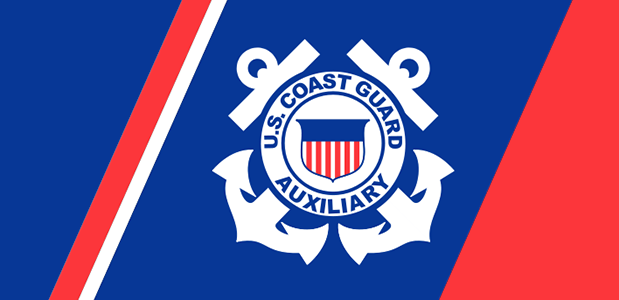— by Susan McBain, Orcas Issues reporter, updated Dec. 4 at 5 p.m. —
High Community Interest in Public Hospital District Town Hall Meeting
More than 100 people crowded into the Orcas Fire District’s Eastsound meeting room on Thursday, Nov. 30, for the first of four Town Hall meetings sponsored by the Coalition for Orcas Health Care (COHC). They came to learn about the proposed Public Hospital District and to ask questions about how it would work, what it would cost, and what the authority and responsibilities of the District’s commissioners would be.
The meeting began with presentations by COHC members to provide basic information about the Coalition, its positions on several issues, factors affecting rural health care, and the operation of the District and its commissioners. The COHC members—Dale Heisinger, Tom Eversole, Art Lange, Ann Presson, and Joellen Moldoff, moderator—stressed two big messages.
- In the past, generous private donors have kept both current medical practices on Orcas Island going, donating a total of about $750,000 per year to cover the full costs of their operations. However, this kind of support is unpredictable and unreliable. The Orcas community must decide whether to create a dependable source of financial assistance to providers of primary and urgent care, or to continue to rely on philanthropy. Both San Juan and Lopez have created public hospital districts because of such uncertainties.
- It is vital for voters to evaluate the candidates for commissioner and their positions on how the District should operate. The commissioners—not the COHC or the public—will make all the important decisions, such as who receives District money, how much, and for what services. They will determine the levy rate and will also hire the district superintendent, as required by law. At least two candidate forums will be scheduled in February and March, at which voters can ask questions of the candidates.
The vote on whether to establish the District, and who the five commissioners should be, will be on April 24, 2018. The COHC is not recommending any individuals as candidates for commissioner but has identified skills sets that would be valuable, including a background in business or government leadership/management, law, accounting, or medical care operations. The COHC encourages people with appropriate skills to file as candidates during the Feb. 5–9 filing period. General qualifications include being at least age 18, a registered voter, and a U.S. citizen. Candidates must reside in the District and must not be employees of any medical practice.
Hilary Canty announced that the Orcas Island Community Foundation is hosting a workshop for people interested in running for commissioner. The workshop will be held on January 10 from 3:00 to 5:00 p.m.
A levy to support medical services on Orcas could not by law exceed 75 cents per $1000 of assessed property value. But, based on their research, COHC members expect the rate to be between 45 and 55 cents per $1000. This translates to a tax of $202.50–$247.50 on a home with assessed value of $450,000.
“The intent of the Orcas ballot measure is to provide quality primary and round-the-clock urgent care for everyone on Orcas Island,” said COHC’s Art Lange. “Nationally, rural medical practices are reimbursed by insurers, Medicare, and Medicaid at lower rates than urban primary care and other specialties. Philanthropy and public support are the only two ways to bridge the gap. Fifty-eight municipal districts in Washington have solved this problem by creating a public hospital district. Of these, 14 do not have actual hospitals, but by law the ballot measure must include the word ‘hospital.’”
Once the informational part of the meeting ended, comments and questions began.
- If voters elect not to create the District, the University of Washington has said it will not renew its contract with Orcas Medical Foundation to run the practice at the Orcas Medical Center. Representatives of Orcas Family Health Center expressed concern that their practice might not be viable if the District is not created. The future of medical care on Orcas would then be uncertain.
- Orcas Fire District paramedics and EMS personnel cannot provide services beyond their legal scope of practice, making procedures such as sutures and x-rays for potential fractures off limits.
- District services would have no overlap with current EMS services, which are for life-threatening emergencies. Creation of the District would not affect OIFR funding.
- In order for an election to be valid, 40% of the number of voters in the previous general election must cast ballots. That number for the District election will be 1,443 voters.
- The commissioners’ decisions would be made in a public venue, and the public procurement process for negotiating contracts for medical services would be rigorous and transparent. If voters were not satisfied with commissioner actions, recalls of commissioners are possible under state law.
- The election will be a district election, but commissioners must run for individual seats, so the five candidates getting the most votes will not necessarily be those elected.
- District funds will be available for distribution as of April 2019.
- The commissioners can change the levy rate annually, as long as it does not exceed 75 cents per $1,000 of assessed property value.
The next Town Hall is scheduled for Monday, Dec. 18, 5:30–7:00 at the American Legion Hall. It will be another brief overview and discussion session. The third Town Hall will cover the operation of public hospital districts; it is scheduled for Wednesday, Jan. 24, 5:30–7:00 at the Orcas Fire District meeting room in Eastsound. The last Town Hall currently scheduled will be a candidates’ forum on March 14.
**If you are reading theOrcasonian for free, thank your fellow islanders. If you would like to support theOrcasonian CLICK HERE to set your modestly-priced, voluntary subscription. Otherwise, no worries; we’re happy to share with you.**








Susan…
A couple of corrections to your article:
1. The OICF workshop is for anyone considering being a commissioner and is not limited to those considering running for a position on the hospital district.
2. I’ve been reassured that there will be more than one public meeting for the commissioners running for the proposed hospital district, perhaps even three meetings. Given the important role that these candidates will play, I would suggest that understanding their platforms will be more important than anything else about this proposed solution to affording medical care on this island.
…Paul